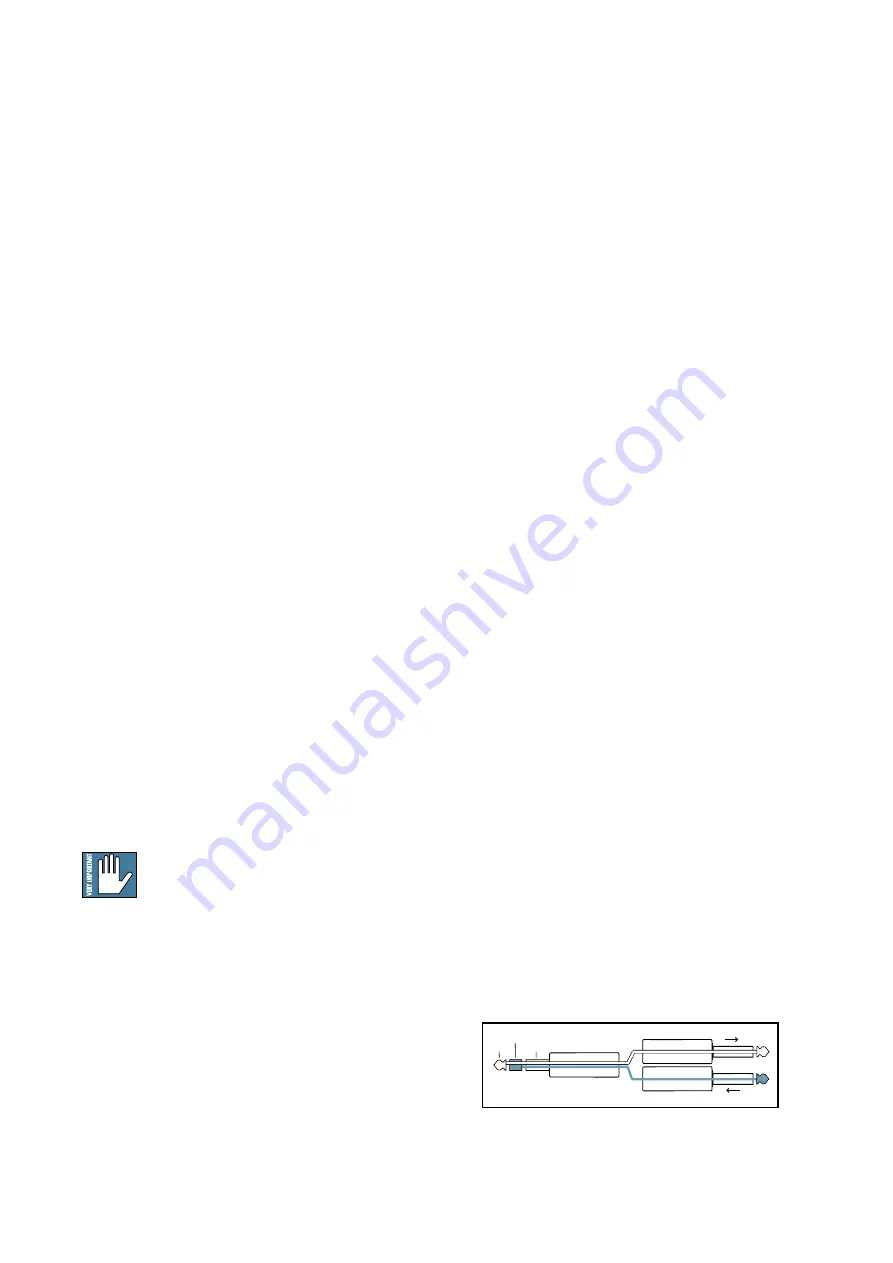
Owner's Manual
11
well as to solo, and add to aux send 1-4. This is routed
using the FW/line input selector [23] on channels 15
and 16. This is useful for live performances, where
those 2 channels might have, for example, a software
synthesizer you are triggering from a MIDI keyboard,
and you want to treat the softsynth as "just another
instrument," with equal processing and routing
options as the hardware keyboards coming into the
other channels.
The FireWire interface works with both PC (using
ASIO for Windows XP and Vista) and Mac (Core Audio
for Mac OS 10.4.11 or higher).
4. LEFT/RIGHT XLR MAIN OUTPUTS
These male XLR connectors provide a balanced
line-level signal that represents the end of the mixer
chain, where your fully mixed stereo signal enters the
real world. Connect these to the inputs of your main
power amplifiers, powered speakers, or serial effects
processor (like a graphic equalizer or compressor/
limiter). It provides a fully balanced signal that is the
same level as the 1/4" TRS main out jacks [13] on the
top panel.
5. MAIN OUTPUT LEVEL
When this switch is out (+4 dB), the XLR main
outputs [4] provide a "+4 dBu" line-level signal. You
can then connect these outputs to the line-level inputs
of power amplifiers, powered loudspeakers, or serial
processors.
When the switch is pushed in (mic), the XLR main
outputs are attenuated to microphone level. You can
then connect these outputs safely to the microphone
inputs of another mixer, providing a submix for
keyboards or drums, for example, in a live sound
application. The main outputs can then be plugged
directly into a stage snake, and appear back at the front
of house console like any other microphone level source.
When mic is engaged, you can safely plug the
XLR main output into a mixer's microphone
input, even if it provides 48 V phantom power.
The switch is recessed, to reduce the chance of
accidently turning it on or off when plugging things in.
6. AUX SENDS 1-4
These 1/4" TRS connectors allow you to send balanced
or unbalanced line-level outputs to external effects
devices, headphone amplifiers, or stage monitors. These
could either be passive stage monitors powered by an
external amplifier, or powered stage monitors with
built-in power amplifiers. All aux sends are independent
of each other, so you can set up to four separate aux
mixes. The overall aux output level can be adjusted with
the aux send master controls [45].
The aux sends can either be pre or post fader,
depending on the position of the pre/post switches [46].
For stage monitor work, use pre, so the stage monitors
do not increase in volume when the channel faders are
adjusted. Imagine how upsetting that can be to big hairy
drummers. This allows you to set up the monitor mix
and levels just right, and not have it change every time a
channel fader is adjusted.
For external processors, use post. In this way, the feed
to external processors will vary with the channel faders,
so the level of any returned effect (like an echo) will
also change if the channel fader is changed, keeping
them in the same ratio (wet/dry).
7. AUX RETURNS 1-4
These 1/4" TRS stereo input connectors allow you to
add the stereo processed output from external effects
processors or other devices to the main mix.
Level adjustment of the incoming signals is made with
the aux return controls [47].
The signals going into aux return 3 can also be added
to aux send 1 by engaging the return to aux 1 switch
[48]. For example, you could add effects from an
external effects processor to your stage monitors.
You can also use these inputs to add any stereo
line-level signals to your main mix, so it could be
another line-level source, not just an effects processor.
If you are connecting a mono source, use the left
(mono) aux return input, and the mono signals will
appear on both sides of the main mix.
8. INSERT (Ch. 1-8)
These unbalanced 1/4" jacks on channels 1-8, are for
connecting serial effects processors such as
compressors, equalizers, de-essers, or filters. The insert
point is after the gain control [21] and low cut filter
[19], but before the channel’s EQ and fader [35].
The channel signal can go out of the insert jack to an
external device, be processed (or whatever) and come
back in on the same insert jack. To do this requires a
standard insert cable that must be wired thusly:
Tip = send (output to effects device)
Ring = return (input from effects device)
Sleeve = common ground
“tip”
This plug connects to one of the
mixer’s Channel Insert jacks.
“ring”
tip
ring
sleeve
SEND to processor
RETURN from processor
(TRS plug)


























